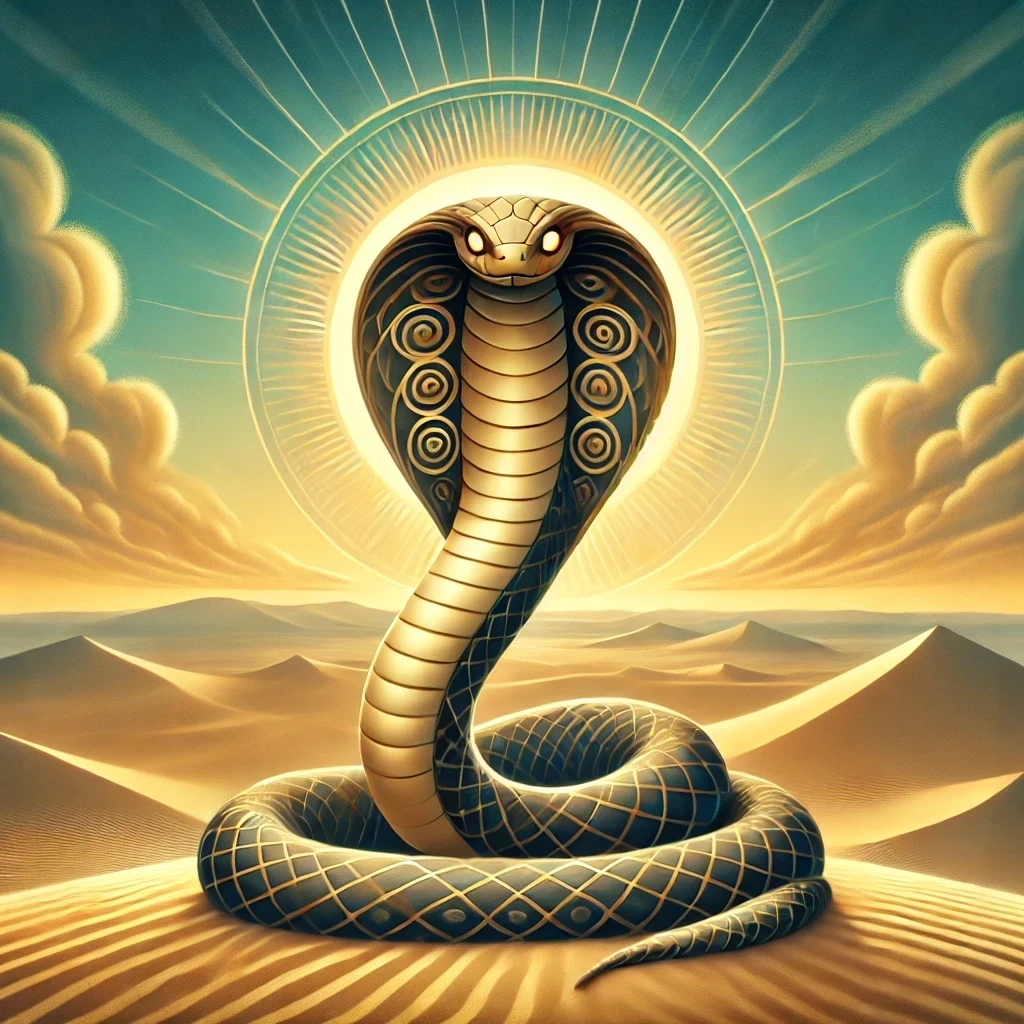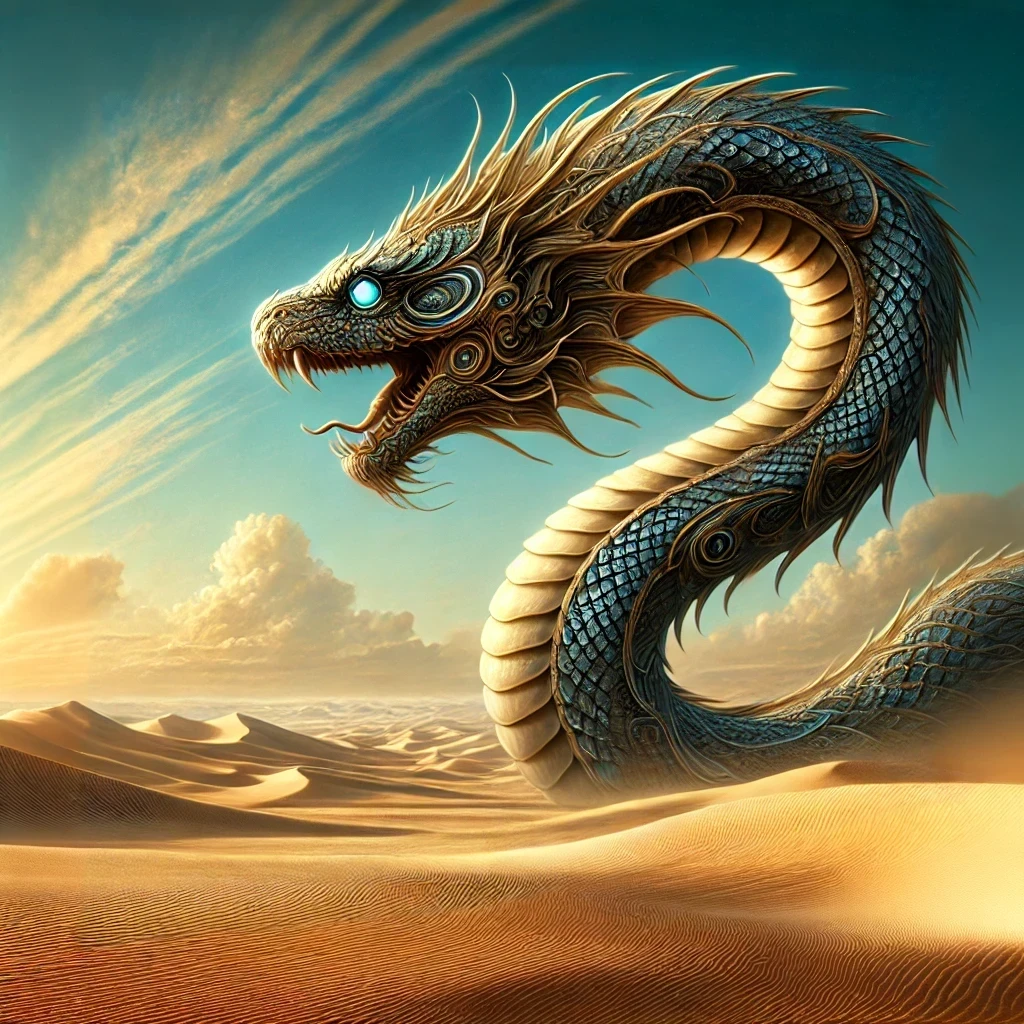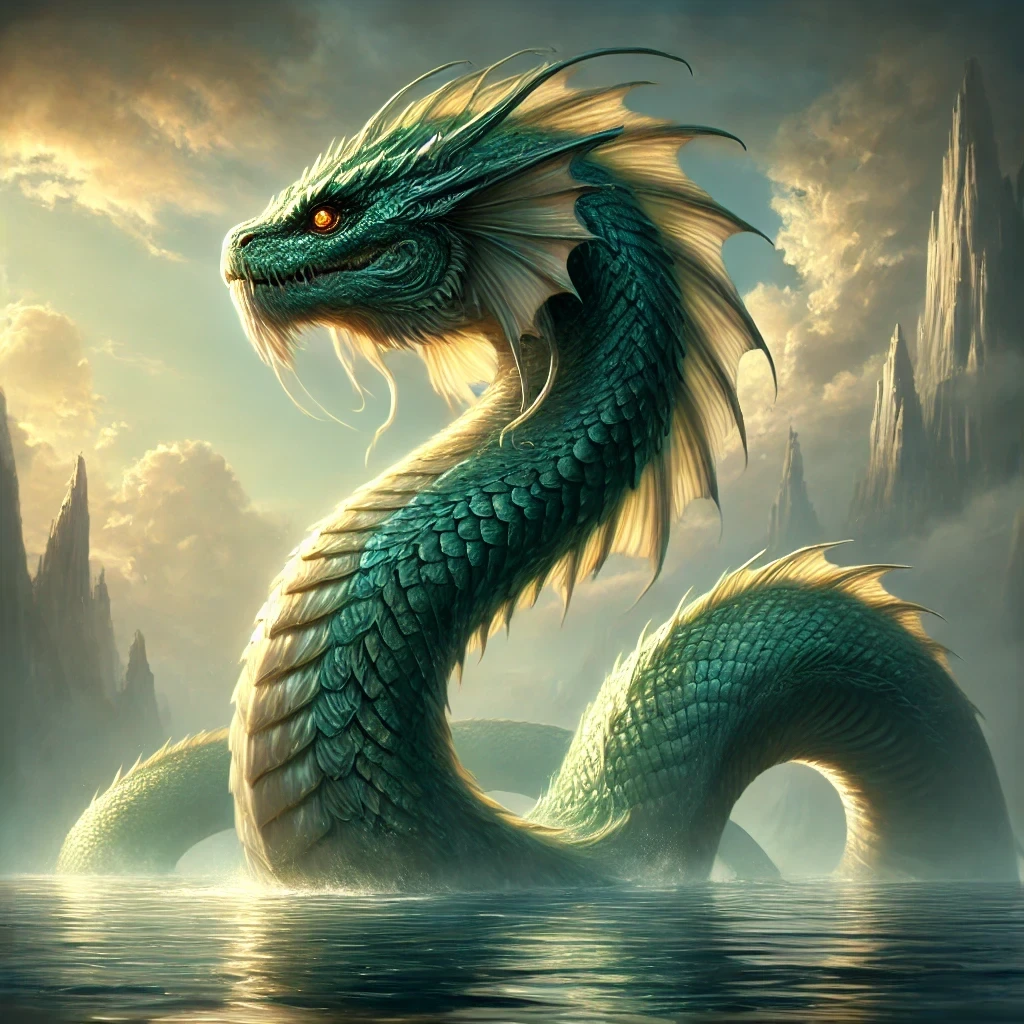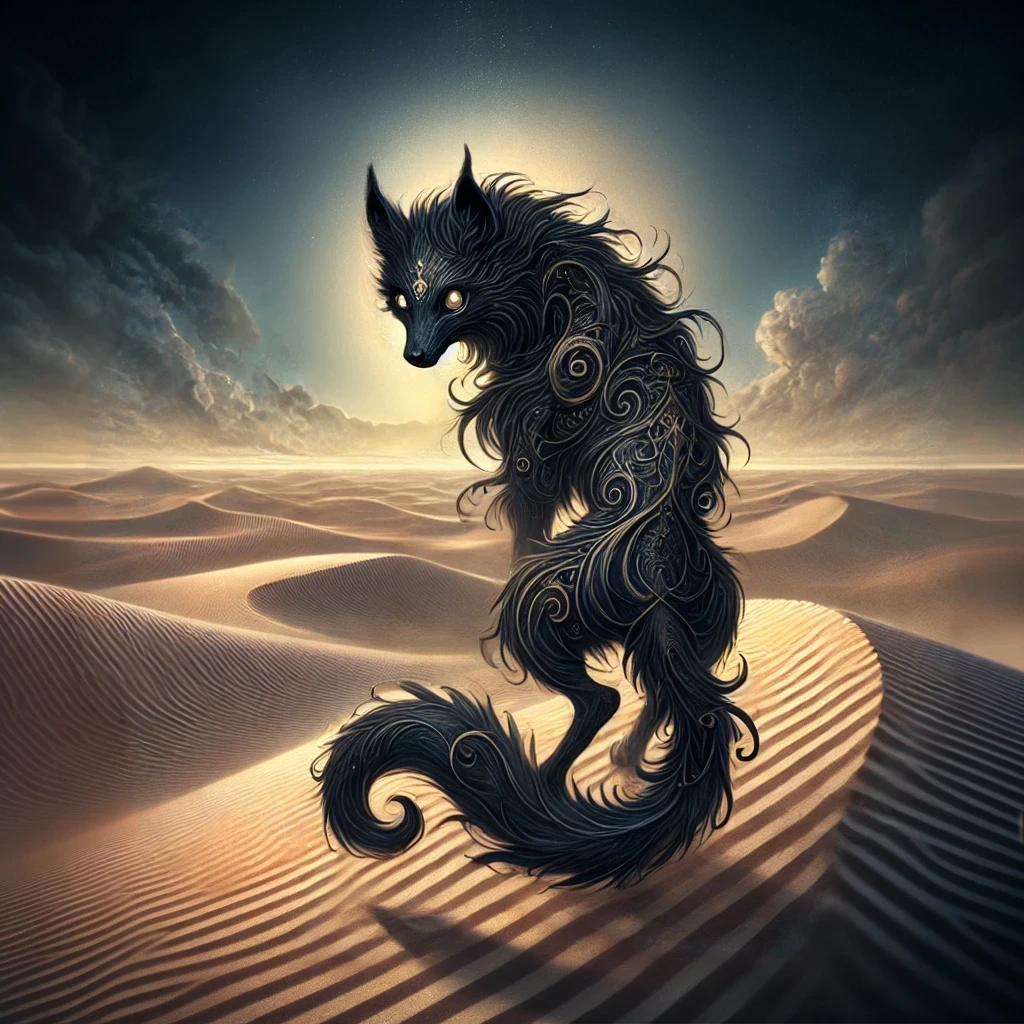The ancient Egyptian pantheon is filled with enigmatic creatures and symbols, but few stand out as prominently as the Uraeus. This powerful and evocative serpent has left its mark not only on mythology but also on the art, culture, and politics of one of history’s most enduring civilizations. Let us delve into its origins, significance, and the tales it inspired.
Origins
The Uraeus traces its roots to the fertile Nile Valley, where serpents were both feared and revered. Ancient Egyptians viewed the serpent as a paradoxical figure: a protector and a harbinger of destruction, depending on the context. The Uraeus specifically symbolized the cobra, a snake native to the region and often encountered in the wild.
Religious Foundations
The earliest mentions of the Uraeus date back to the Old Kingdom, where it was closely associated with the goddess Wadjet. Wadjet, depicted as a cobra or a woman with a cobra’s head, was the protector of Lower Egypt and a symbol of sovereignty. Over time, the Uraeus evolved into a universal emblem of kingship, representing the pharaoh’s divine authority.
Integration with Royalty
The Uraeus first appeared prominently in royal regalia during the Middle Kingdom. Positioned on the brow of the pharaoh’s crown, it served as a protective and authoritative symbol, ensuring the ruler’s supremacy both in the mortal and divine realms.

Appearance
The Uraeus is an artistic and symbolic representation of the cobra, stylized in ways that emphasize its majesty and ferocity.
Physical Features
The cobra is depicted with a raised hood, signaling its readiness to strike. This posture conveys vigilance and strength, qualities the pharaoh wished to project. Often, the Uraeus is adorned with intricate designs, including gilding and precious stones, to emphasize its divine nature.
Integration with Art
From temple carvings to jewelry, the Uraeus was a recurring motif in ancient Egyptian art. Its sleek, sinuous form was often paired with solar discs or the Eye of Ra, further amplifying its spiritual significance.
Symbolism
The Uraeus was far more than a decorative element; it was a symbol layered with profound meaning.
Protection and Power
At its core, the Uraeus symbolized protection. It was believed to ward off evil spirits and safeguard its bearer from harm. The Uraeus’ placement on the pharaoh’s crown underscored this protective role, shielding the king from both physical and metaphysical threats.
Divine Authority
The Uraeus was a manifestation of divine power. By wearing the symbol, the pharaoh was seen as a living god, endowed with the wisdom and strength of the deities.

Abilities
In mythology, the Uraeus was not merely a passive symbol but an active force capable of extraordinary feats.
Fiery Breath
One of the most striking attributes of the Uraeus was its ability to spit fire. This fiery breath was said to annihilate enemies, a divine weapon against chaos and disorder. Some accounts describe the Uraeus’ fire as the very essence of the sun’s power, aligning it with the solar deities Ra and Atum.
Omniscient Vigilance
The Uraeus was believed to possess a heightened sense of awareness, making it an ideal guardian. This attribute extended to its association with Wadjet, who was often portrayed as an ever-watchful protector of the land.
Tales
The Uraeus appears in several myths and legends, underscoring its importance in Egyptian storytelling.
Ra and the Serpent
One of the most famous tales involving the Uraeus is its connection to Ra, the sun god. According to myth, the Uraeus emerged from Ra’s brow and became his protector. In this role, it vanquished Apophis, the serpent of chaos, ensuring the sun’s safe passage through the underworld each night.
The Crown’s Curse
Legends also speak of the Uraeus as a double-edged sword. While it conferred immense power, it also demanded responsibility and reverence. One myth recounts how a pharaoh who misused his authority faced the wrath of the Uraeus, leading to his downfall.

Relationships
The Uraeus’ significance is enriched by its connections to other deities and figures in Egyptian mythology.
Wadjet and Nekhbet
Often paired with Nekhbet, the vulture goddess of Upper Egypt, the Uraeus represented the unity of the Two Lands. Together, they symbolized the pharaoh’s dominion over all of Egypt, with Wadjet protecting the north and Nekhbet the south.
The Eye of Ra
The Uraeus was frequently associated with the Eye of Ra, a powerful symbol of protection and wrath. In many depictions, the Uraeus embodies this fiery aspect of Ra, acting as his enforcer against enemies.
Trivia
Even in the modern era, the Uraeus continues to captivate and inspire.
- Etymology: The term “Uraeus” originates from the Greek word “ouraios,” meaning “on its tail.” The original Egyptian term is “iaret,” meaning “risen one.”
- Modern Legacy: The Uraeus has appeared in numerous works of fiction, from movies to literature, symbolizing mystery and power.
- Archaeological Finds: Some of the most exquisite Uraeus artifacts were discovered in Tutankhamun’s tomb, including an intricately crafted golden cobra on his burial mask.
- Cultural Symbolism: Beyond Egypt, cobras have held sacred significance in other cultures, such as India, highlighting the universal allure of serpentine imagery.



